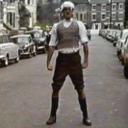Yahoo Answers is shutting down on May 4th, 2021 (Eastern Time) and beginning April 20th, 2021 (Eastern Time) the Yahoo Answers website will be in read-only mode. There will be no changes to other Yahoo properties or services, or your Yahoo account. You can find more information about the Yahoo Answers shutdown and how to download your data on this help page.
Trending News
Calculating Theoretical Probabilities!!? H E L P?
P(A U(upside down) B) is the probability of rolling an even number and a prime number.
A (upsides down U) B= __________so n(A(upside down U) B)=___________
2 Answers
- ?Lv 69 years agoFavorite Answer
P(A U B) is the probability of rolling an even number and a prime number.
so
A U B = An occurrence of either an even number and/or (inclusive or) a prime number
with one dice it is either: 2, 4, 6, 1, 3, 5 (these are all possibilities)
n(A U B) is the number of times this event has happened
- TompLv 79 years ago
A couple of points:
1) by "rolling" are you referring to a six-sided die?
2) by "P(A U(upside down) B)" to you mean P(Aâ©B) - ie P(A intersection B)?
If so, with the sample set S = {1, 2, 3, 4, 5, 6}, with cardinality |S| = 6
A = {2, 4, 6}
B = {2, 3, 5}
So
Aâ©B = {2} and |Aâ©B| = 1
Hence P(Aâ©B) = |Aâ©B| / |S|
= 1/6
If by "rolling" you mean something else, then you need to state the sample space in order to determine the solution.




